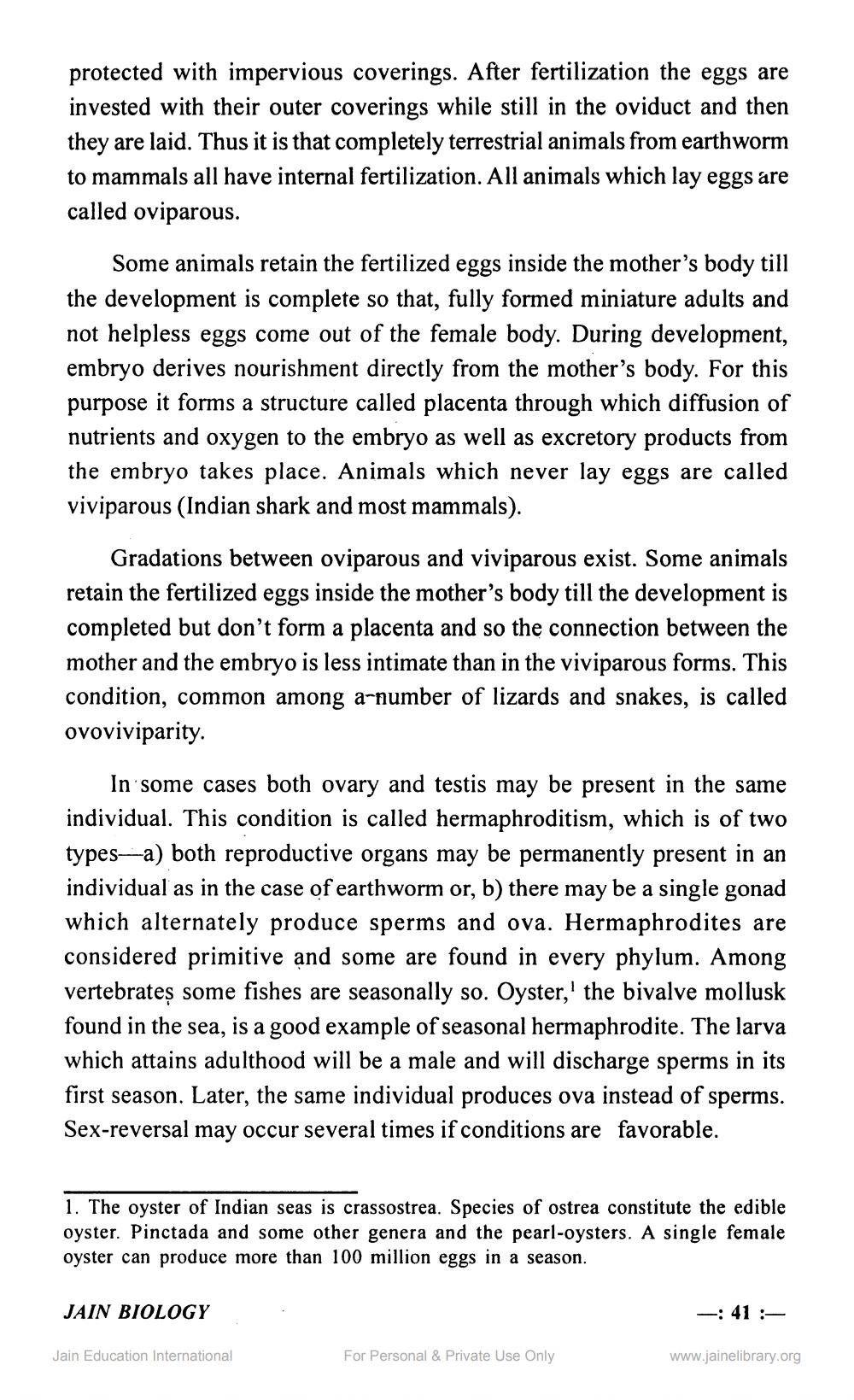________________
protected with impervious coverings. After fertilization the eggs are invested with their outer coverings while still in the oviduct and then they are laid. Thus it is that completely terrestrial animals from earthworm to mammals all have internal fertilization. All animals which lay eggs are called oviparous.
Some animals retain the fertilized eggs inside the mother's body till the development is complete so that, fully formed miniature adults and not helpless eggs come out of the female body. During development, embryo derives nourishment directly from the mother's body. For this purpose it forms a structure called placenta through which diffusion of nutrients and oxygen to the embryo as well as excretory products from the embryo takes place. Animals which never lay eggs are called viviparous (Indian shark and most mammals).
Gradations between oviparous and viviparous exist. Some animals retain the fertilized eggs inside the mother's body till the development is completed but don't form a placenta and so the connection between the mother and the embryo is less intimate than in the viviparous forms. This condition, common among a number of lizards and snakes, is called ovoviviparity.
In some cases both ovary and testis may be present in the same individual. This condition is called hermaphroditism, which is of two types-a) both reproductive organs may be permanently present in an individual as in the case of earthworm or, b) there may be a single gonad which alternately produce sperms and ova. Hermaphrodites are considered primitive and some are found in every phylum. Among vertebrates some fishes are seasonally so. Oyster,' the bivalve mollusk found in the sea, is a good example of seasonal hermaphrodite. The larva which attains adulthood will be a male and will discharge sperms in its first season. Later, the same individual produces ova instead of sperms. Sex-reversal may occur several times if conditions are favorable.
1. The oyster of Indian seas is crassostrea. Species of ostrea constitute the edible oyster. Pinctada and some other genera and the pearl-oysters. A single female oyster can produce more than 100 million eggs in a season.
JAIN BIOLOGY
Jain Education International
For Personal & Private Use Only
-:41:
www.jainelibrary.org




